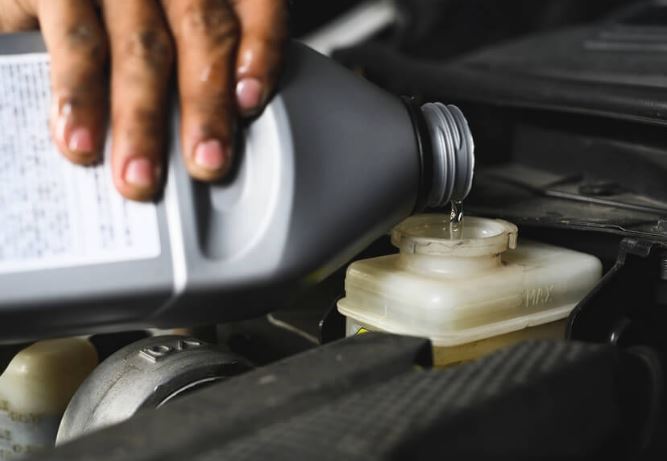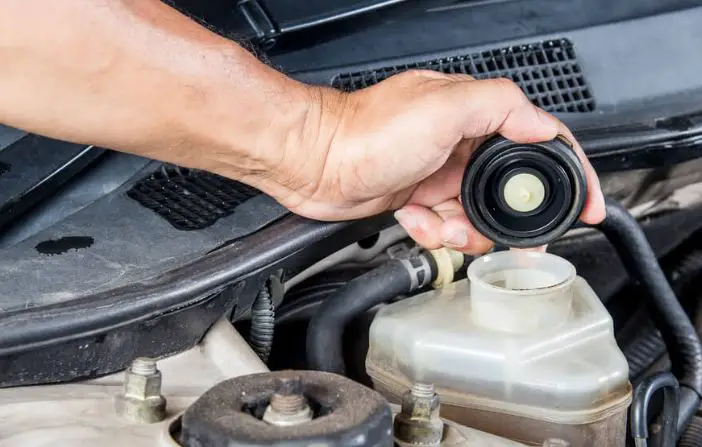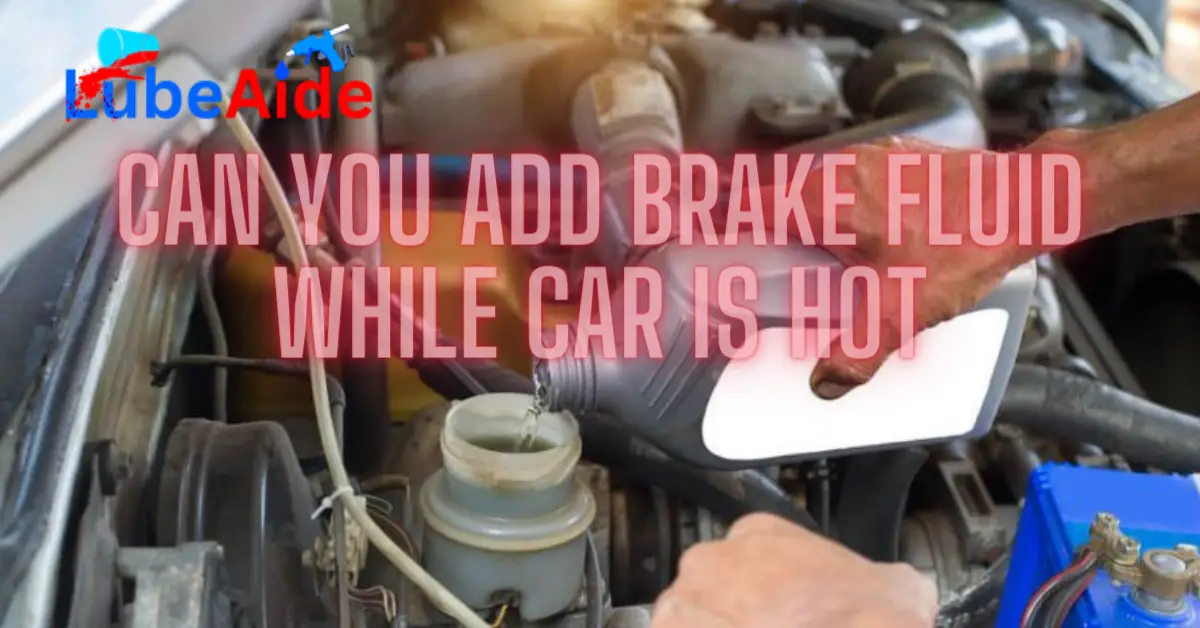Brake fluid is an essential component of a car’s braking system, and it’s important to ensure that the fluid level is maintained at the recommended level. However, car owners may be unsure whether it’s safe to add brake fluid while the car is hot. The answer to this question depends on a few factors.
Firstly, it’s important to note that brake fluid can get very hot during normal driving conditions, so adding fluid to a hot system is not inherently dangerous. However, if the brake fluid is boiling due to overheating, adding more fluid can cause the system to become over-pressurized, which can lead to brake failure. Additionally, adding brake fluid to a hot system can cause the fluid to expand, potentially leading to leaks and other issues.
Overall, it’s generally recommended to wait until the car has cooled down before adding brake fluid, to ensure that the fluid level is accurate and to avoid any potential safety issues. However, in an emergency situation where brake fluid needs to be added while the car is hot, it’s important to do so carefully and cautiously, and to monitor the system closely for any signs of overheating or other issues.
Brake Fluid and Temperature

Why Temperature Matters
Brake fluid is a crucial component of a vehicle’s braking system. It is responsible for transmitting force from the brake pedal to the brake calipers, which in turn apply pressure to the brake pads and slow down or stop the vehicle. However, brake fluid is also sensitive to temperature changes.
When brake fluid gets hot, it can expand and become less effective at transmitting force. This can lead to a spongy brake pedal or reduced braking power, which can compromise the safety of the vehicle. On the other hand, when brake fluid gets too cold, it can become thicker and more difficult to flow, which can also affect braking performance.
It is important to note that different types of brake fluid have different temperature ratings. DOT 3 and DOT 4 brake fluids, for example, have boiling points of around 401°F and 446°F respectively, while DOT 5 brake fluid has a boiling point of around 500°F. Using a brake fluid with a lower boiling point than recommended can lead to brake fade and reduced stopping power, especially in high-performance vehicles or in situations where the brakes are heavily used.
In summary, temperature plays a critical role in the performance of brake fluid. It is important to use a brake fluid that is appropriate for the vehicle and the driving conditions, and to monitor the fluid level and quality regularly to ensure optimal braking performance.
Checking Brake Fluid Level

When to Check Brake Fluid Level
Checking the brake fluid level is an essential part of maintaining a vehicle. It is recommended to check the brake fluid level at least once a month, or whenever the brake warning light comes on. Additionally, it is important to check the brake fluid level before any long trips or when the car has been driven for an extended period.
How to Check Brake Fluid Level
To check the brake fluid level, first, locate the brake fluid reservoir under the hood of the car. The brake fluid reservoir is usually located near the front of the engine compartment, on the driver’s side of the vehicle. The container is translucent, which makes it easy to see the level of the fluid inside.
Next, check the level of the brake fluid by looking at the markings on the side of the container. If the brake fluid level is below the “MIN” mark, it is time to add more brake fluid.
When adding brake fluid, it is important to use the correct type of brake fluid recommended by the vehicle manufacturer. It is also essential to wait for the car to cool down before adding brake fluid, as hot brake fluid can cause burns and damage to the brake system.
In conclusion, checking the brake fluid level is a crucial part of maintaining a vehicle’s braking system. By following the recommended guidelines, car owners can ensure that their brakes are functioning correctly and safely.
Adding Brake Fluid
When to Add Brake Fluid
It is important to regularly check the brake fluid level in your car and add fluid as needed. The brake fluid level should be checked at least once a month, or more often if you notice any warning lights or signs of low brake fluid.
One common question is whether it is safe to add brake fluid when the car is hot. The answer is no. Brake fluid expands as it heats up, so adding fluid when the car is hot can cause the fluid to overflow and potentially damage other parts of the braking system.
How to Add Brake Fluid
To add brake fluid, first locate the brake fluid reservoir under the hood of your car. The reservoir is typically located near the brake master cylinder and is labeled as “brake fluid.”
Before adding fluid, clean the area around the reservoir cap to prevent any dirt or debris from entering the brake system. Then, remove the cap and check the fluid level. If the level is below the minimum line, add brake fluid until it reaches the maximum line.
It is important to use the correct type of brake fluid for your car. Check your car’s owner manual or consult with a mechanic to determine the appropriate type of brake fluid.
After adding fluid, replace the cap securely and check the level again to ensure it is at the appropriate level.
In summary, it is important to regularly check and add brake fluid as needed. However, it is not safe to add brake fluid when the car is hot. Always use the appropriate type of brake fluid and ensure the cap is securely replaced after adding fluid.
FAQs About Can You Add Brake Fluid While Car Is Hot
Is it safe to add brake fluid to a hot car?
It is generally not safe to add brake fluid to a hot car. Brake fluid is sensitive to temperature, and adding it while the car is hot can lead to various issues.
What can happen if I add brake fluid to a hot car?
Adding brake fluid to a hot car can cause several problems. Firstly, the heat from the brakes can cause the brake fluid to expand, and adding more fluid may cause it to overflow, potentially damaging the braking system. Secondly, introducing cool brake fluid to a hot system can create rapid temperature changes, which can lead to the boiling of the brake fluid. Boiling brake fluid can result in a loss of braking efficiency and compromise your ability to stop the vehicle effectively.
When is the best time to add brake fluid?
The best time to add brake fluid is when the car has cooled down. It is recommended to wait until the brakes and the surrounding components have reached a safe temperature before adding brake fluid.
How can I determine if the car’s brakes are hot?
It can be challenging to determine the exact temperature of the brakes without specialized tools. However, as a general rule of thumb, if you have been driving the car for an extended period or if the brakes feel excessively hot to the touch, it’s best to wait for the car to cool down before adding brake fluid.
What should I do if I need to add brake fluid and the car is hot?
If you find yourself in a situation where you need to add brake fluid, but the car is hot, it is advisable to wait for the car to cool down completely. You can park the car in a shaded area or open the hood to allow heat to dissipate more quickly. Once the car has cooled down, you can safely add brake fluid following the manufacturer’s recommendations or consult a professional mechanic for assistance.
Final Thought
Adding brake fluid to a hot car can be risky and is generally not recommended. Brake fluid is sensitive to temperature, and adding it while the car is hot can lead to various issues. It is advisable to exercise caution when adding brake fluid to a hot car. Your safety should always be a priority, and following the manufacturer’s guidelines and best practices will help ensure the proper functioning of your braking system.
Related Topics:
- why does my oil light come on when i brake
- What Can I Use Instead of Brake Fluid
- Can You Use Transmission Fluid for Brake Fluid
- Is It Necessary to Change Brake Fluid Every Two Years
- How to Dispose of Brake Fluid
- Does Brake Fluid Leak When Car is Off
- Brake Fluid vs Transmission Fluid
- Brake Fluid Leaking from Caliper Bolt
- When to Flush Brake Fluid
- how to remove brake line from caliper without losing fluid


